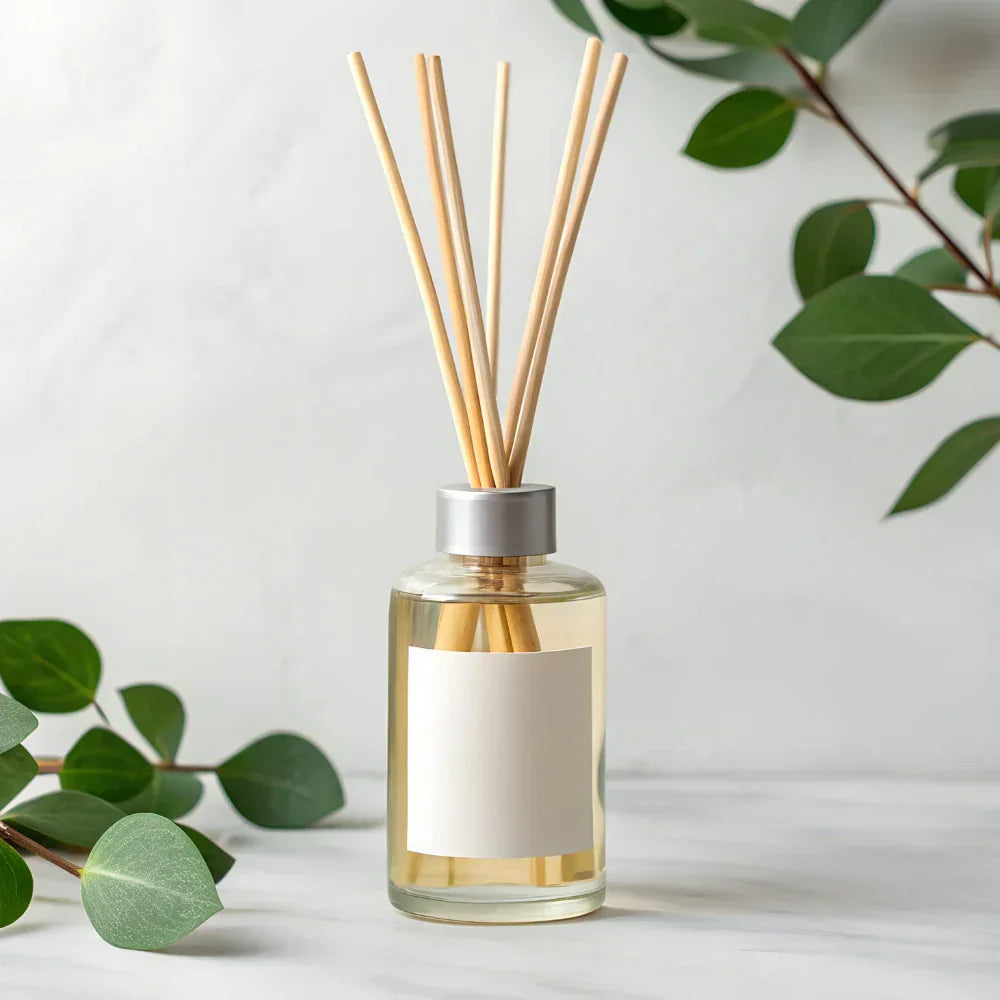
How Diffuser Bottles Work
Share
How Diffuser Bottles Work: The Science Behind the Scent
You have likely seen them, elegant bottles with slender reeds poking out, quietly scenting a room without flames, plugs, or sprays. Diffuser bottles are a popular, low-maintenance way to add consistent fragrance to any space. But have you ever wondered how they actually work?
In this post, we’ll break down the simple yet clever science behind how diffuser bottles work, and share tips on getting the most out of yours.
1. What Is a Diffuser Bottle?
A diffuser bottle is a container, typically made of glass or ceramic and filled with fragrance oil. Long sticks (called reeds) are inserted into the bottle, drawing the scent upward and releasing it into the air.
There’s no electricity, heat, or open flame involved. Instead, diffuser bottles rely on a natural process: capillary action and evaporation.

2. The Science Behind It: Capillary Action
Capillary action is the same process plants use to draw water from the soil up into their stems and leaves. In the case of diffuser bottles:
- The reeds (often made from rattan) have tiny channels that pull the scented oil upward.
- As the oil travels through the reeds, it reaches the top and begins to evaporate into the air, carrying the fragrance with it.
This allows the scent to diffuse slowly and evenly, providing a continuous aroma over time.
3. The Role of Each Component
Let’s take a closer look at each part of the diffuser and its function:
The Bottle
- Holds the fragrance oil.
- Narrow necks slow evaporation, helping the oil last longer.
- The design can influence how quickly the scent is released (wide mouths = faster evaporation).
The Reeds
- Made from rattan, bamboo, or synthetic materials.
- Rattan is most common due to its porous nature and smooth channels.
- More reeds = stronger scent; fewer reeds = lighter scent.

The Fragrance Oil
- A mix of essential oils and a base (like DPG or alcohol) that helps it travel up the reed.
- Thinner oils travel faster and create a stronger scent throw.
- Some blends are formulated for long-lasting performance with minimal evaporation.
4. How Long Do Diffuser Bottles Last?
It depends on a few factors:
- Oil quality: Premium oils may last longer and smell more authentic.
- Room conditions: Heat, air flow, and humidity affect evaporation speed.
- Number of reeds: More reeds = faster oil use.
- Bottle size: Larger bottles hold more oil and last longer.
On average, a 100ml diffuser lasts 1 to 3 months.
5. Tips for Maximizing Your Diffuser’s Performance
- Flip the reeds every week or two to refresh the scent.
- Use the right number of reeds: Start with 4–6 and adjust based on room size and fragrance strength.
- Avoid direct sunlight or heat, which can cause oils to evaporate faster.
- Place in a high-traffic area (like near a doorway) so air movement helps spread the scent.
- Keep away from AC vents, which can dry out the reeds or cause uneven diffusion.

6. When to Replace Reeds
Over time, reeds can become saturated and clogged, reducing their effectiveness. Replace them every 1–2 months, or when you notice the scent weakening even after flipping.
7. Are Diffuser Bottles Safe?
Yes, they are one of the safest home fragrance methods because:
- No flame or electricity
- Low risk of spills (if placed on a stable surface)
- No aerosols or synthetic air freshener sprays
Still, it’s wise to:
- Keep out of reach of pets and children
- Place on a coaster or tray to protect surfaces from oil drips
Diffuser bottles are a brilliant blend of nature and science. With no need for heat or electricity, they quietly work through capillary action to keep your space smelling fresh and inviting. By understanding how they work, and how to use them properly, you can enjoy a longer-lasting, safer, and more consistent fragrance experience.
So next time you enjoy a hint of lavender or citrus in the air, remember: it’s all thanks to a little physics, some well-designed reeds, and the timeless appeal of scent.
